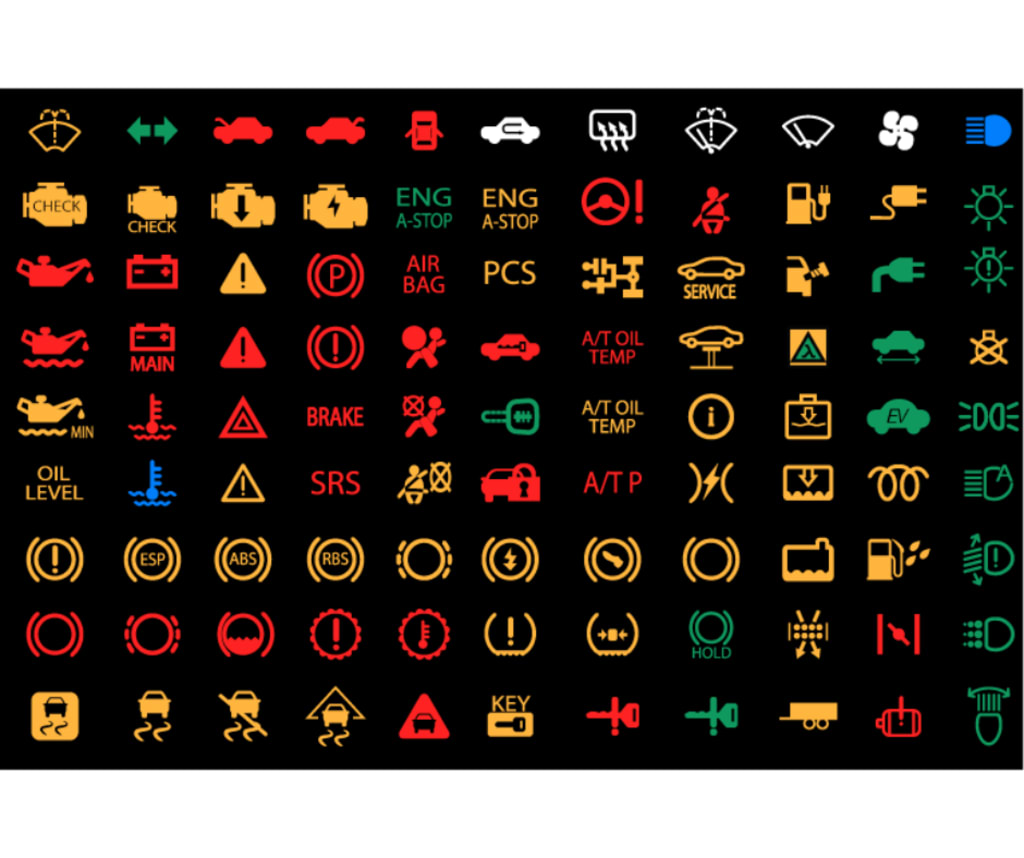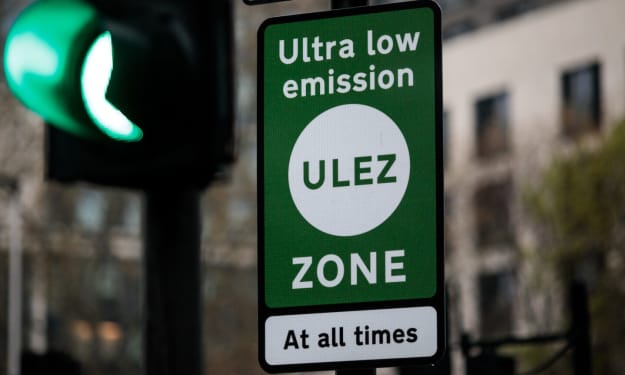Understanding Warning Lights on Your Dashboard
Navigating Dashboard Warnings: Understanding Your Vehicle's Signals

Ever had that sinking feeling when a mysterious light pops up on your car’s dashboard? You’re not alone. It’s like your car is speaking a secret language, and you’re left to decode the message. But don’t worry, we’re here to help you understand those warning lights and what they mean for your car’s health.
Picture this: you’re driving to work, coffee in hand, when suddenly a light on your dashboard flickers on. Panic sets in as you wonder if your car is about to break down.
This guide is here to demystify those warning lights, ensuring you know exactly what your car is trying to tell you. By the end of this post, you’ll feel more confident and prepared to handle any dashboard warning light that comes your way.
In this blog, we will explain a few of these concepts. In the next part, we will delve further into them.
The Basics of Dashboard Warning Lights
Your car’s dashboard is like a control center, constantly monitoring and reporting on the various systems of your vehicle. Here’s a breakdown of the most common warning lights and what they signify:
1. Check Engine Light
The check engine light can be one of the most alarming. It can indicate anything from a loose gas cap to a serious engine problem. If this light comes on, it’s best to get your car checked by a professional to avoid any potential damage.
2.Oil Pressure Warning Light
This light looks like an oil can and indicates that your car is running low on oil. Driving with low oil pressure can cause serious engine damage, so it’s important to address this issue immediately.
3. Battery Alert Light
This light, often resembling a battery, signals an issue with your car’s charging system. It might mean your battery is dying or there’s a problem with your alternator. Either way, it’s crucial to get this checked to avoid getting stranded.
4. Brake System Warning Light
If you see an exclamation mark inside a circle, it means there’s a problem with your brake system. This could be due to low brake fluid or an issue with your brake pads. Since brakes are essential for your safety, don’t ignore this warning.
5. Tire Pressure Warning Light
A horseshoe-shaped symbol with an exclamation point indicates low tire pressure. Driving on underinflated tires can be dangerous and can affect your car’s handling and fuel efficiency. Check your tire pressure and inflate your tires to the recommended level.
6.Engine Temperature Warning Light
The Engine Temperature Warning Light indicates that your engine is overheating. This warning light is typically represented by a thermometer or waves and may be red or amber in color. When this light comes on, it means that the engine’s temperature has risen beyond the safe operating range. Immediate action is required to prevent potential engine damage. You should stop the vehicle as soon as it’s safe and check the coolant level. If necessary, add coolant or seek professional assistance to diagnose and fix the underlying issue.
7. Traction Control Light
The Traction Control Light illuminates when the vehicle’s traction control system is active. This system is designed to prevent wheel spin and maintain traction on slippery or uneven surfaces. The light usually features a car with wavy lines beneath it or an icon of a wheel with a squiggly line. When this light is on, it indicates that the traction control system is working to enhance stability and control. If the light stays on continuously, it could indicate a malfunction in the traction control system, and you may need to have it checked by a professional.
8. Anti-lock Braking System (ABS) Warning Light
The Anti-lock Braking System (ABS) Warning Light indicates a problem with the ABS, which is a safety system that prevents the wheels from locking up during braking, helping to maintain steering control. This warning light usually features the letters “ABS” inside a circle, often accompanied by two curved lines on either side. When this light is illuminated, it means the ABS is not functioning properly. While your regular brakes will still work, the additional safety provided by the ABS will be unavailable. It’s advisable to have your vehicle inspected by a professional to diagnose and repair the ABS system.
9. Traction Control Malfunction Light
The Traction Control Malfunction Light indicates an issue with the vehicle’s traction control system. This light typically looks like a car with wavy lines underneath it or an exclamation mark inside a triangle. When this light comes on and stays illuminated, it means that there is a problem with the traction control system, and it is not functioning correctly. Without traction control, the vehicle may be more prone to wheel spin, especially in slippery conditions. It’s important to have the system checked and repaired by a professional to restore proper functionality and ensure safe driving.
What to Do When a Warning Light Comes On
Stay Calm: The first step is to stay calm. Not all warning lights indicate immediate danger. Some are simple reminders for maintenance.
Refer to Your Manual: Your car’s manual is your best friend when it comes to understanding warning lights. It provides specific information on what each light means for your vehicle model.
Check Critical Systems: If the light is related to vital systems like brakes or oil, pull over safely and check the issue. It might be something you can address on the spot, like adding oil or tightening a gas cap.
Seek Professional Help: For lights related to the engine, battery, or other complex systems, it’s best to consult with a mechanic. They can diagnose and fix the problem, ensuring your car runs smoothly.
Common Misconceptions About Warning Lights
Myth 1: “I Can Ignore It” Ignoring a warning light can lead to more serious problems down the line. It’s always better to address the issue early.
Myth 2: “It’s Always an Expensive Fix” Not all warning lights lead to costly repairs. Sometimes it’s a minor issue that can be fixed easily and inexpensively.
Myth 3: “I Need to Panic” While some lights do indicate urgent issues, many are simply reminders or alerts for minor problems. Understanding what each light means can help you stay calm and make informed decisions.
Conclusion
Understanding your car’s warning lights can save you from stress and costly repairs. By familiarizing yourself with these signals, you can take proactive steps to maintain your vehicle’s health. Remember, your car is like a trusted companion — it’s always looking out for you. So next time a warning light pops up, you’ll know just what to do.
Have you recently seen a warning light on your dashboard? Don’t wait for a minor issue to become a major problem. Check your car’s manual and consult a professional today. And if you found this guide helpful, share it with your friends and family to keep everyone safe on the road.
About the Creator
Ava Jane
I'm Ava Jane, Senior Content Marketing Manager at London Motorsport for over a decade.
Enjoyed the story? Support the Creator.
Subscribe for free to receive all their stories in your feed. You could also pledge your support or give them a one-off tip, letting them know you appreciate their work.






Comments
There are no comments for this story
Be the first to respond and start the conversation.